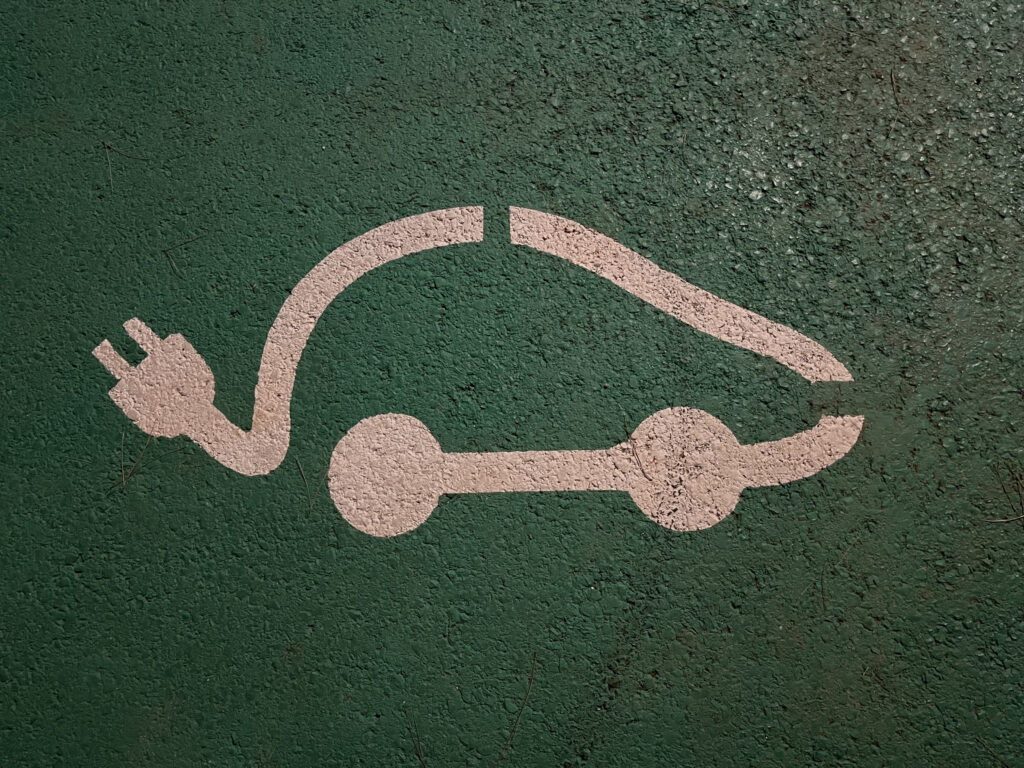Electric vehicles make up 17% of global new-car market in September
09 November 2023

The global electric-vehicle (EV) market grew by 23% year-on-year in September, with a record 1,291,077 units registered. José Pontes, data director at EV-volumes.com (part of Autovista Group), analyses the leading trends, models, and carmakers.
Battery-electric vehicles (BEVs) made up 12% of global registrations in September. When combined with plug-in hybrids (PHEVs), EVs took a 17% share of the new-car market. Alongside non-plug-in hybrids (12% share), 29% of all new cars hitting the roads in September had some form of electrification.
EVs could have taken an even larger market share, however, internal-combustion-engine registrations kept growing as the global automotive market recovery continued. In the EV market alone, BEVs represented a 69% share, continuing their domination over PHEVs, and keeping their year-to-date holding at 70%.
Could Tesla be flattening?
The Tesla Model Y held on to the top global EV spot in September, despite not hitting a record performance in the month. September falls into the carmaker’s usual quarterly registration peak, indicating that its fluctuations between quarters could be flattening, with the possibility of sales also levelling out.
BYD began amassing behind the Model Y in September’s top 20 EV rankings. The Chinese brand placed the next five models behind the leading Tesla, including the Song in second place and the Qin Plus in third. The BEV version of the Qin Plus achieved its fifth record month in a row, helping tilt BYD further towards all-electric model dominance, even when models had a PHEV version available.
In seventh, the GAC Aion Y achieved a monthly-best 27,004 registrations, putting it ahead of the Tesla Model 3 in eighth and the BYD Han in ninth. The Tesla offering suffered its worst month since July 2022, with just 26,058 registrations. However, with deliveries of the refreshed sedan underway as of October, this negative result may just have been a market pause. Any potential resurgence may affect the figures of the Model Y, with sales cannibalisation within the brand occurring.
Volkswagen (VW) Group had a strong month, with three models in the top 20. The ID.4 took 13th with 14,535 units, and the smaller ID.3 was 15th, thanks to 13,791 registrations. The Audi Q4 e-Tron made it to 18th place with 11,307 deliveries. Further down the table in 17th, the Li Auto L9 posted its second record month in a row with 11,884 registrations.
Outside the top 20, going from largest to smallest models, the Zeekr 001 recorded 8,701 registrations. This is an encouraging sign for a model expected to perform well within the brand’s overseas plans in 2024. The full-size BYD Seal PHEV achieved 7,444 registrations in its first month, a positive result for the carmaker.
In the compact category, the value-for-money MG4 hit a record 10,229 registrations. Great Wall Motor’s Ora Good Cat reached 9,915 registrations, the hatchback’s best result since December 2021. meanwhile, in the city EV category, Geely’s Panda Mini EV posted a five-digit result of 10,221 units.
In the midsize category, the main highlight was the rise of the Changan Deepal S7. The model reached another record score in September, with 10,244 registrations. Other impressive figures were achieved by the Geely Galaxy L7 (10,007 units), Ford Mustang Mach-E (9,173 units), Leapmotor C11 (9,071 units), and BMW iX3 (7,040 units, a year best). The XPeng G6 reached 8,132 units in only its fourth month on the market.
BYD Song steals second
In the first nine months of the year, while the Tesla Model Y held on to the top spot and is unlikely to be challenged, the BYD Song profited from the Tesla Model 3’s slowdown in registrations to take second place. With October still offering an advantage thanks to Tesla’s quarterly delivery pattern, the Chinese SUV can be expected to hold on to the position for a couple more months. However, December is likely to be a close call, as the Model 3 should see exceptional results in the last month of the year.
Another point of interest heading into the last quarter of the year is eighth place. The Wuling Mini EV has slowed its monthly registrations total to around 20,000 units a month. This provides the ninth-place BYD Han and 10th-place GAC Aion Y with an opportunity to surpass the model. Given its current performance, it would not be surprising if the Aion Y ended the year in eighth, just below its stablemate, the Aion S.
Things are even more interesting in the lower half of the table, where the BYD Seagull climbed another position to 12th. The city car is poised to join the top 10 by the end of the year, possibly even entering the fight for eighth.
A few positions below, the VW ID.3 also moved up a spot to 16th. Meanwhile, the Li Auto L7 jumped two positions to 18th while the L8 joined the table in 19th. Both of these models can be expected to go after the 17th-place Denza D9 in the fourth quarter. In 20th, the Audi Q4 e-Tron replaced the Volvo XC40. However, the German crossover will have to do its best to resist the advances of the Li Auto L9, which is just 3,000 units below it.
Best-selling brands
In September, BYD achieved its fifth-record performance, registering 273,728 units. Meanwhile, Tesla only delivered 154,009 units, a year-on-year drop of 19%. This was the brand’s worst fall since October 2019 (excluding the COVID-19-derived 26% drop of May 2020).
Yet the poor performance can likely be attributed to the Model 3 production changes, meaning it is a temporary bump in the road. The real test for both Tesla and BYD will be in 2024, as the pair are likely to see their growth rates decrease significantly.
Ninth-place Li Auto went from strength to strength, with its sixth best-performing month in a row. The brand recorded 36,060 registrations thanks to strong results across its line-up. With the carmaker still constrained by supply, it can be expected to beat its records regularly in the remainder of the year. However, further disruption is likely when the L6 and L5 land sometime next year.
Just below, SAIC achieved a record month in 10th thanks to the MG4, which reached five digits for the first time (35,104 units). The carmaker compensated for a somewhat discreet domestic performance with a large presence overseas, as the most successful Chinese OEM in export markets.
One of the biggest surprises of the month was Toyota, which took 16th following its second-record result in a row (17,068 units). The company posted strong results across its operations. This included the RAV4 and Prius in North America and Japan, the bZ4X and RAV4 in Europe, and the bZ3 in China.
Meanwhile, thanks to the success of its C11 SUV, Leapmotor also posted its second-record score in a row, with 16,891 registrations. Another startup on the rise was XPeng in 20th. Thanks to the success of the G6, the brand reached 15,433 registrations overall, its best result since June 2022. Outside the top 20, Peugeot secured 14,470 registrations taking 21st, thanks to a strong month for the e-208.
Two-brand race
In the January to September brand ranking, BYD kept ahead of Tesla. Together the pair are responsible for more than a third of the global EV market. This situation could change in 2024, as both are expected to grow below the market average.
BYD is reaching a natural limit in its home market, with the brand already in first position. Even if the new Seagull provides a fractionally larger share with its incursion in the city-car segment, the only way for the carmaker to grow is to start exporting in massive volumes. However, this will only happen with local production.
With BYD’s plants in Thailand and Brazil becoming operational in 2024, both sites can be expected to hit their expected production average of 150,000 units a year in 2025. European sales are limited by tariffs and logistic costs, meaning it will likely be 2025 before the Chinese brand is able to export in large volumes, once its Thailand and Brazil plants are fully operational.
Already well established across the world, Tesla has a different challenge, namely the lack of a fresh product. While the Cybertruck is expected to ramp up production next year, it will be focused on the North American market, with a small contribution to the overall tally.
This leaves the rest of the world with a mature Tesla line-up, with both the Model Y and Model 3 close to their natural limits of consumer demand. The brand will benefit from the global increase in EV share, and the refreshed Model 3 and Model Y are likely to generate some fresh demand. However, for the first time ever, Tesla will probably be more worried about losing ground to its competitors than increasing its already large market advantage.
While it could drop vehicle prices even lower, Tesla does not have as much of a margin as it had in the past, and that could further harm residual values. This would make leasing deals less interesting, and in the long run, nullify the effects of the price drop.
Lower down the table, Geely (10th) could be pressured in the fourth quarter by a rising SAIC, which climbed one spot in September to 11th, at the expense of Volvo. In 14th, Kia closed in on Hyundai (13th). Meanwhile, Ford climbed to 17th, surpassing Jeep (19th) in the race for the title of best-selling US legacy brand.
BYD heads up OEM EV ranking
In the first nine months of the year with brands grouped under OEMs, BYD held a comfortable lead with a 21.9% share, while Tesla fell to a 14% share. Third place went to VW Group (7.2%), which kept itself a good distance ahead of Geely–Volvo (6.1%) in fourth.
SAIC held fifth with 5.4% of the global new-EV market, while Stellantis took sixth with 4.6%. Seventh-place BMW Group (4.1% share) kept its position, and Hyundai Motor Group (with 4%) lost eighth place to a rising GAC (4.1%).
Looking just at BEVs in the first nine months of 2023, Tesla remained in the lead with 20.1% of the market. The OEM held a comfortable lead over BYD (15.9%), making it unlikely that the Chinese carmaker will remove Tesla from the BEV throne this year.
Tesla gained a precious advantage in the first half of the year, but in 2024, the race will probably end differently. This change is unlikely to happen in the first quarter, as the Chinese market will hold ew year festivities which will surely slow down BYD’s sales. However, the second quarter will probably be the inflexion point when BYD surpasses Tesla in the BEV race.
In the last place on the podium, VW Group (7.7%) lost some ground to SAIC (7.5%). An entertaining race can be expected between these two in the remainder of the year. In fifth, GAC kept growing (5.7%).
The state of markets
A healthy EV market is one without any monopoly, as a diverse range of shareholders breeds innovation. However, China accounts for over half the global EV market, which is not a healthy situation, nor is BYD and Tesla owning 36% of the total market. Looking at China’s EV industry, the pace of innovation regarding batteries and digitalisation is costly.
A number of global brands have found partners in China, including Stellantis (Leapmotor), VW Group (XPeng, SAIC), Renault (Geely), and Mercedes-Benz (Nio). While in the past, joint ventures were put in place in the country for local carmakers to learn the business from big foreign OEMs, now it is the other way around. These OEMs will be able to shorten the learning curve, ensuring their products remain competitive.
Tesla already has one foot in China, thanks to its Shanghai operations, but US legacy OEMs seem to be oblivious to the potential. Instead of doubling down on EVs globally, they are delaying their targets.
This is especially difficult to understand in the case of General Motors (GM). It could profit immensely from its joint venture with SAIC, namely by selling its own label models like the Wuling Bingo, which would be a perfect fit in markets in Latin America, where the carmaker risks losing its status as a major player due to its refusal to engage with mass-market EVs.
The US EV industry also lags behind China in the number of electric startups. Hypothetically, if a Dieselgate-like scandal hit BYD, the Chinese EV industry would have dozens of brands to replace it. The US does not have such a rich ecosystem.
If anything happened to Tesla, there is currently no brand ready to fill the potential void. There is one that looks promising but is still in the early-startup stage (Rivian), while two others are in their infancy (Lucid and Fisker). Because they came later, Rivian and the other brands did not get the same attention as Tesla, which is delaying development and preventing the US industry from encouraging good alternatives.
In Europe, the picture is not much better, but not because the local legacy OEMs are helpless. Most have credible plans for the EV transition, even at the cost of working with Chinese OEMs. The weak point in the European EV industry is that all its EV startups have either died before they got to market or are in seemingly eternal limbo.
This lack of innovation in Europe is worrying, as it is the fresh blood from these newer companies that will eventually trickle into the big OEMs opening them up to new opportunities. Without local talent being properly developed, it is left to legacy OEMs to learn the EV business the best they can with their Chinese partners.
Korea-based Hyundai Motor Group should be safe. They could have been more ambitious regarding production targets but with top-notch technology. Additionally, there is an abundance of battery makers in their domestic market. Costs only need to be pushed down and production targets up to transition into the EV era without major drama.
Finally, there is Japan. Toyota could become a smaller player after the EV transition than it is right now, but it is unlikely to go bankrupt. The carmaker could be forced to make a deal with another OEM, but there are worse fates.
The remaining OEMs do not have it so easy. Subaru could survive by staying close to Toyota, Suzuki could benefit from its Indian operations, and Nissan should benefit from Renault’s association with Geely. However, Mazda and Honda do not have an easy way out of the EV conundrum. The former is too small and engrained in ICE to make a swift transition. Meanwhile, the latter has just broken up its EV partnership with GM.



